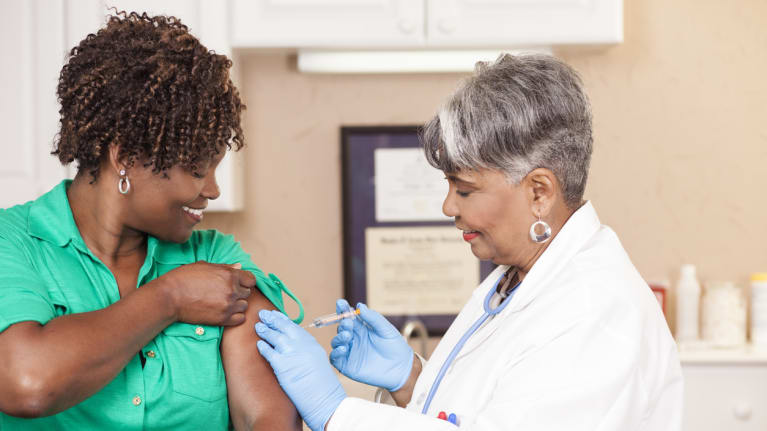

?Workplace flu clinics, a convenient strategy for curbing the spread of influenza, have rebounded to their pre-pandemic levels or even higher, according to several providers.
After two years of nonstop headlines about COVID-19 vaccines and boosters, flu shots are again a big priority for companies that want to keep their employees healthy and productive.
“Particularly now with talent being as hard as it is to come by, you want to keep your workforce as healthy and happy as you can,” said Dr. Amy Meister, chief medical officer at Workpartners, a division of the Pittsburgh-based UPMC Health Plan. Operating in all states, Workpartners connects people to proven clinical programs and services.
“It’s an employee sweetener—you wouldn’t have thought that getting a shot at work is top of the list of desired benefits, but is becoming table stakes,” Meister said. “It’s a nice benefit to offer those onsite so your employees don’t have to take a day off work or worry about stopping on the way home or going to their primary care doctors’ offices, which are really overwhelmed right now.”
Many employers offer rewards or incentives for employees who stay up-to-date on their vaccinations. Depending on their benefit design, this may be something like a credit toward employees’ out-of-pocket expenses or a gift card for well-being services.
Employers are trying to make access to flu vaccinations as easy as possible. Some have even utilized a “fast pass” concept to eliminate waiting in line at their local pharmacy.
Rite Aid, a national pharmacy chain, said demand for flu clinics is up this year in both office- and community-based locations. “It is great timing this year as we can do both flu and COVID at the same time, now with the updated boosters,” as soon as they become available, the retailer said in an e-mail.
For a company to host a clinic, Rite Aid requires an average of 20 participants per hour. (To schedule a clinic in the community, click here.)
The company also recommends that employers make sure employees know about the opportunity and urge them to sign up. If hosting a clinic isn’t possible, companies can also give out vouchers so employees can get a flu shot on their own time at their local pharmacy.
While some companies prefer to offer two jabs—one for flu and one for a COVID-19 booster—at the same workplace clinic, Meister said most organizations her company works with offer one at a time. “They want to space it out because they are concerned about really feeling crummy the next day.”
It’s important to get a flu shot every year. “The flu is a smart bug,” Meister said. “It changes its anatomy, and that’s why you have to get the latest cocktail every year.” Getting the vaccine doesn’t guarantee workers will not get the flu, but it usually leads to a less severe case, she added.
Flu season usually goes from October to March. Some employers set up vaccination clinics in the fall while others wait for the later spike in cases in the winter, Meister said.
Controversy over the COVID-19 vaccines has led to some vaccination hesitancy that has carried over to flu vaccines, said LaWanda Dunn, nursing supervisor for population health for the Richmond City and Henrico County Health District, which offers clinics at public housing and community centers in Virginia.
She urges people to read guidelines from the U.S. Centers for Disease Control and Prevention, instead of information from unverified sources such as social media.
“You’ve got to take care of your own health and well-being to decrease your risk of not just you getting sick, but making someone else sick,” Dunn said.
If flu cases spike in your area, Dunn recommends that people wash their hands frequently and even wear a mask.
Above all, stay home if you are coughing and feverish, health care officials urge.
“One of the biggest changes that has been transformative since the pandemic is the idea now that you have permission to stay home. When you don’t feel well, avoid exposing other people, wash your hands, mask when appropriate and contact your health care representative for guidance on when to safely return to community settings,” Dunn said. “That is a huge cultural shift. Now there are well-described pathways and policies that tell employees who to talk to, how to get the care they need and when it’s safe for them to come back.”
Cristina Rouvalis is a freelance writer based in Pittsburgh.

